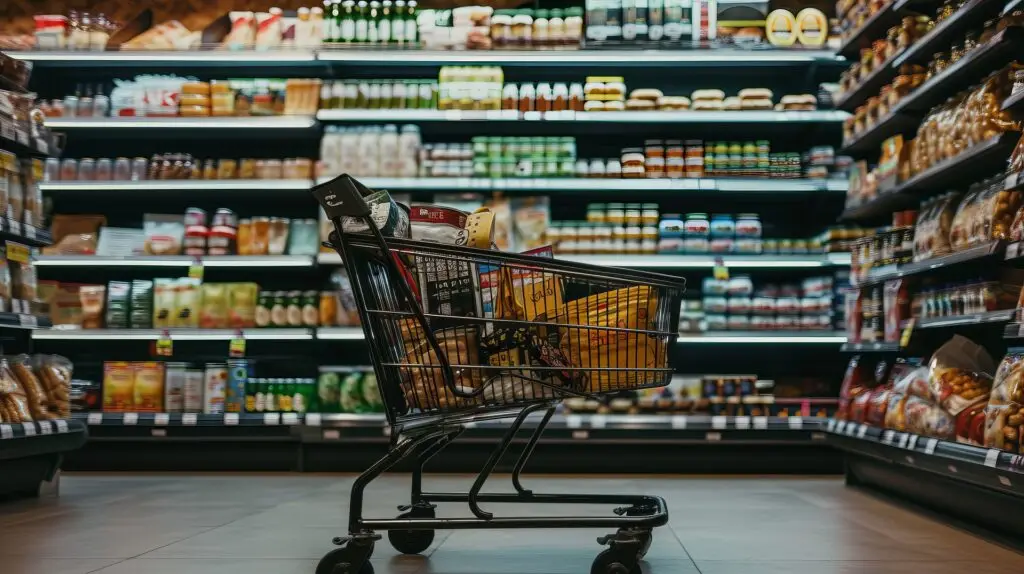You’ve probably heard conflicting answers to that question. There are plenty of question marks around organic food. And maybe the higher price tag has put you off even considering organic groceries.
Good food should do more than taste good. Let’s go behind the supermarket shelves to see what we’re really eating.
Peeling back the wrapping on non-organic food
Eating non-organic food? It’s hard not to.
Non-organic food is farmed conventionally. Conventional farming covers the vast majority of farmland: only 3% of land is organic farming in the UK and 4.8% in the world.
Conventional farming is designed to meet high demand with an overwhelming supply. This means making sure every crop is protected against disease, can grow in vast quantities and looks presentable for supermarkets.

How do they do this? With genetic modification (GMO), chemical pesticides and fertilisers, mass production of single crops (monocultures) and more.
The same goes for meat and dairy production. Conventional livestock production squeezes out as much produce as possible by using antibiotics to fight off diseases triggered by stress, cramped living conditions and restricted feed.
What’s conventional farming doing to people?
It’s widely acknowledged that pesticides, GMO and conventional livestock production aren’t doing us any good.
However, some argue that the toxicity exposure to humans is managed by the Maximum Residue Level (MRL). But this pesticide approval process doesn’t require any safety testing of pesticide levels. So how safe are we?
Pesticides wreak havoc on human health. Exposure to pesticides in the womb and as a child causes neurotoxicity, poor brain development and attention problems. For example, organophosphate is responsible for increasing ADHD cases among five-year-old children.
Shockingly, the endocrine disruption caused by pesticides contributes to the biggest annual health cost in the EU.

Pesticides are not just on our plates. Farm workers are susceptible to a chronic cough, decreased lung capacity, asthma and bronchitis. Intense exposure causes a multitude of skin conditions as well as blindness, dizziness and even death.
Cadmium concentrations are 48% higher in conventional farming than organic, and this is a nasty one. It demineralises bones, damages kidneys and is carcinogenic.
Pesticides also kindles diseases such as Parkinson’s and Alzheimer’s through neurotoxicity and cell death. Chemicals cause cancer in the brain, breast, prostate and increase the likelihood of leukaemia and lymphoma.
What about the antibiotics in our meat and dairy? Well, unfortunately we’re consuming resistant bacteria from conventional meat and dairy. The result? This bacteria won’t be killed off properly by antibiotics when they attack our system.
This is the food that looks at us innocently from the supermarket shelves.
I’ve heard enough—so what’s organic food got to offer?
Organic farmers believe there’s a much better way to farm.
They’re guided by the principle of respecting nature’s systems and restrict external inputs (like pesticides). They farm in harmony with the environment to produce nutritious and clean food.

They use natural fertilisers, such as compost, and rotate their crops to give the soil a chance to recover. They allow beneficial insects and refuse to use chemicals, leading to greater biodiversity.
Organic farmers uphold high standards. They are thoroughly inspected at least once a year to achieve organic certification. Standards restrict the use of antibiotics, forbid GMOs and do not allow UV radiation.
Livestock are only brought inside for breeding purposes and only consume completely organic food. Animals are not allowed to be isolated and antibiotics are only used as a last resort after natural treatments.
Tell me more about organic goodness
Organic milk and meat contains 50% more fatty acids and 68% more antioxidants than their conventional counterparts. Eating organically comes with better weight management, higher sperm counts and lower incidences of non-Hodgkin lymphoma.
Children are much better off with organic products. When a pregnant mother only consumes organic dairy products, she is significantly reducing the baby’s chances of eczema and giving her baby more fatty acids in her milk.

Organic produce contains more iron, vitamin E and omega 3. All this goodness naturally results in lower cases of type 2 diabetes, cardiovascular disease, toxicity exposure, hypertension and allergies. What’s more, organic fruits and vegetables contain more phenolic compounds which are anticarcinogenic, antimicrobial and antioxidant.
Nobody wants toxins in their body. An organic diet makes your body cleaner and stronger.
The cost that’s actually a benefit
Organic food is undoubtedly much better for us and the environment. But we may not feel the same about our pockets.
Typically, organic costs more. However, some organic food is not as expensive as you may think. An organic sourdough bread from Abel & Cole is £2.90 whereas a non-organic sourdough bread in a major supermarket is £3.50. It depends on what you’re comparing.
The real cost is what matters. What do you want to pay in: health or money? Maybe spending that extra cash is worth it in the long run.
Read more about health here or take a look at my copwriting here.
